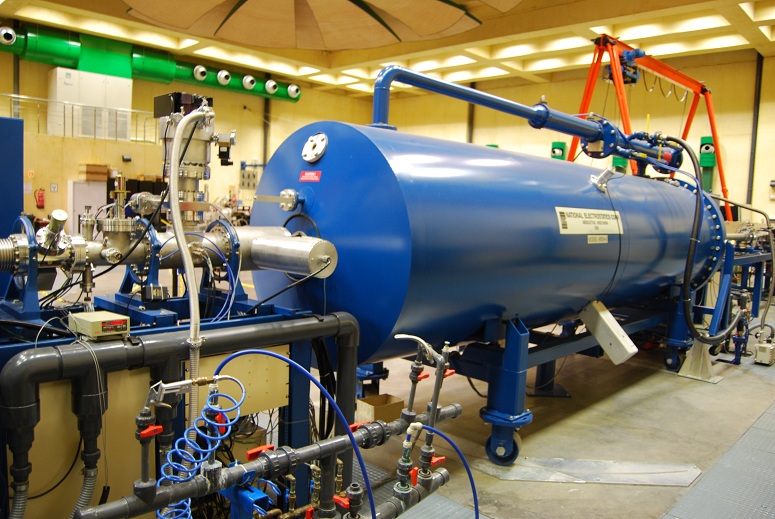Tandem 3MV Accelerator

Ions are produced by three ion sources. The first one is based on radiofrequency techniques (Alphatross) and generates negative ions from gases (H, He, N, ...). There is also a caesium sputtering source (SNICS) which produces negative ions from solid samples. The most recent one is a Duoplasmatron source, which is very reliable and provides a high-brightness beam. The sources are connected by ports to an injection magnet that selects the desired ion mass.
Â
In the two-pellet chain tandem accelerator, the selected ions are accelerated with a maximum terminal voltage of 3 MV. The beam line, which is situated after the accelerator, includes several instruments for focusing, steering and monitoring the beam. At the line end, the beam can pass directly to the 0° line or it can be deflected by the switcher magnet towards one of the five beam lines.
Â
Photons and particles are detected using standard detectors: SiLi and LEGe from Canberra, an Ortec HPGe, a NaI(Tl) detector and ion-implanted silicon detectors.



 Â
  Â
 


